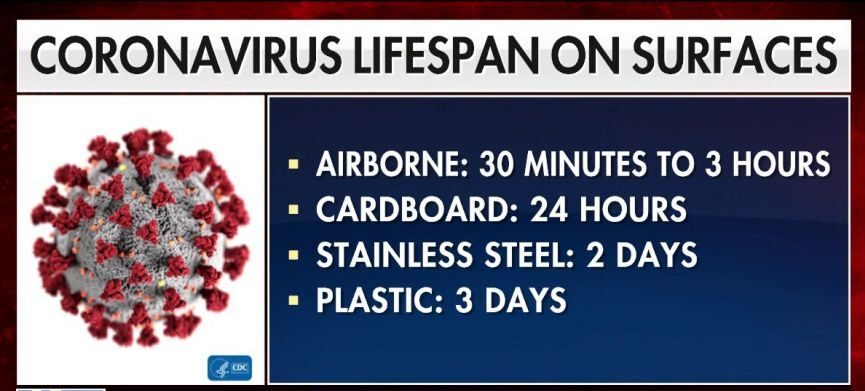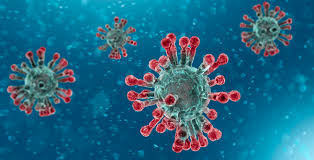16th April 2020 – There are Things About the Virus We just Don’t Understand Yet…but we will
A Blog by Dr David J Flavell PhD FRCPath & Dr Sopsamorn (Bee) Flavell BSc PhD
Scientific Directors of Leukaemia Busters
16th April 2020
Viral Survival
The SARS-CoV-2 coronavirus that is the cause of the COVID-19 illness infecting over 2 million people globally, is a hardy and sometimes vicious little beast. Today the UK government extended the national lockdown for a further 3 weeks buying us more time to get things right before restrictions are eased in future.
Experts are admitting that there are characteristics of this virus that are disturbing and sometimes baffling; it’s highly infectious nature, its ability to survive for several days on different surfaces, the unusual and often fatal nature of the pneumonia it causes in a proportion of patients and the changes this has brought about to the usual practices in intensive care units for the sickest of patients. Modern medicine still has great deal to learn about the SARS-CoV-2 virus and in the meanwhile the world continues to battle against the plague that has turned everybody’s life upside down.
Firstly, let’s be clear about one thing, this coronavirus is a hardly little beast surviving for many hours or even days on many different types of surface. Even though it is little more than a tiny sphere made of fat containing a small piece of genetic material known as RNA and a few proteins protruding out from its surface, it has the ability to survive in the outside world for days or even weeks.

There has been at least one formal laboratory study showing the different survival times of infectious virus on surfaces ranging from plastic to stainless steel where infectious virions can persist up to 72 hours and likely for even longer than this. When in an aerosolized or droplet form infectious virions survive for up to 3 hours. Another report from the US Centers for Disease Control (CDC) reported the detection viral RNA (the genetic material of the virus) on many surfaces from the Cruise ship Diamond Princess 17 days after passengers had disembarked before the ship had been sanitized.
However, whether the viral RNA detected was still intact infectious virus was never tested for so it’s impossible to say without more detailed lab-based experiments as to the true survival time of any infectious virus. This all leads to an uncomfortable realisation that many surfaces may be contaminated by infectious virus, particularly in hospital environments or anywhere where COVID-19 patients are passing by coughing, sneezing or even just talking.
There is now extremely good evidence that many COVID-19 patients are shedding virus several days before they develop symptoms and are therefore capable of transmitting infection long before they even realise that they’re ill. You don’t need us to point out the risks here.
Is Coronavirus airborne?

Experts are still not agreed on the long distance airborne transmission of COVID-19. Is it in the air as highlighted in a recent Nature article ? Very recent studies in China and the US suggest that it may well be the case and that airborne infection over distances greater than the currently advised two metre social distancing likely does occur. Further studies are needed to prove this definitively but in the meanwhile we think we should assume that if airborne transmission does occur then this becomes a matter of vital importance.
Failing to take measures against this possibility could easily result in a disastrous resurgence of infections in the community once lockdown is eased and people return to normal patterns of behaviour. Such a resurgence would lead to a second lockdown with all disastrous consequences on further deaths and economic pain that would entail.
So what might be done to mitigate this?
As we’ve argued for from the outset, a simple face mask would reduce the risk of further airborne transmission and in our opinions in the face of even weak evidence face mask use should be enforced in all public spaces. We believe that the government’s obvious reluctance to recommend the use of masks isn’t really a scientific one but is instead based on the fear that there are insufficient supplies currently available and may leave shortages for health care workers.
The answer to this is really very simple. The government could do similarly as they so successfully did with CPAP oxygen devices and ventilators and make a call for companies to step in and repurpose some of their manufacturing capabilities for the mass production of simple surgeons quality face masks for distribution to every person in the UK.

This is exactly what is happening in some other countries and we look particularly to Thailand where the owner of the CP Group, Mr Dhanin Chearavanont has philanthropically set up a dedicated factory facility in Bangkok (see photo above) within 5 weeks for the mass production of face masks for Thai hospitals and the general population. Today that repurposed Thai factory produced it’s first 100,000 masks for distribution.
Why take the risk of a second lockdown if simple mandatory mask wearing might just reduce the danger of this by a critical degree?
The cost of this would be miniscule in comparison to the cost of a second lockdown, surely this should win the argument hands down. If you’re unsure of the value because of the inconclusive nature of the current evidence but there is nonetheless even some faint indication of benefit then you take that option, particularly when the stakes are so high. We now have at least a further three weeks of lockdown, time that could be used well to put in place mass face mask manufacture and distribution. If Thailand can take the initiative to do so then surely so can we.
Petition – have your say!
Please help the situation by signing the Parliamentary Petition for the mandatory used of face masks in public places here.


